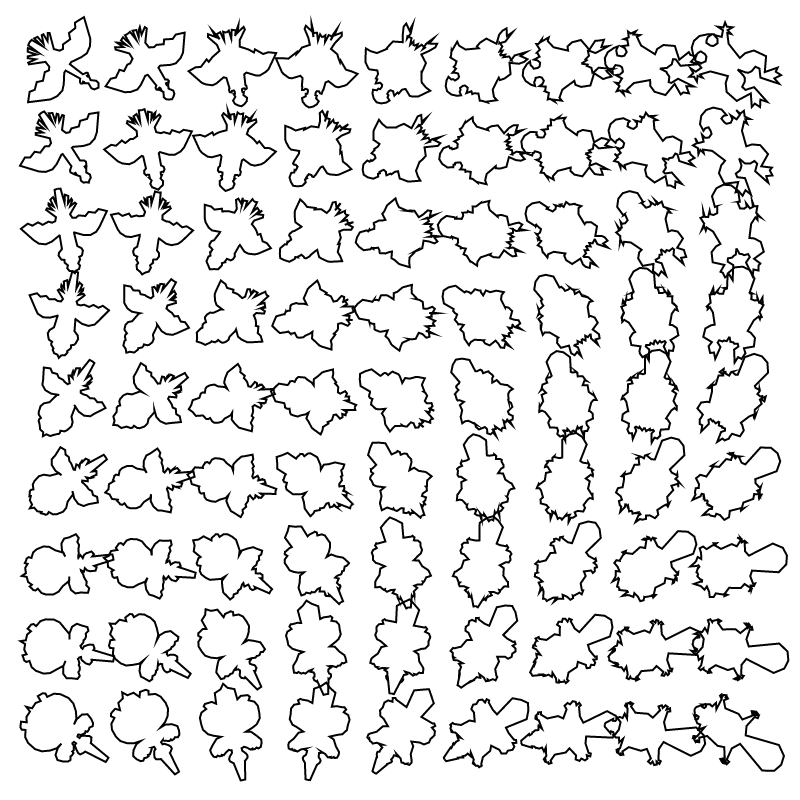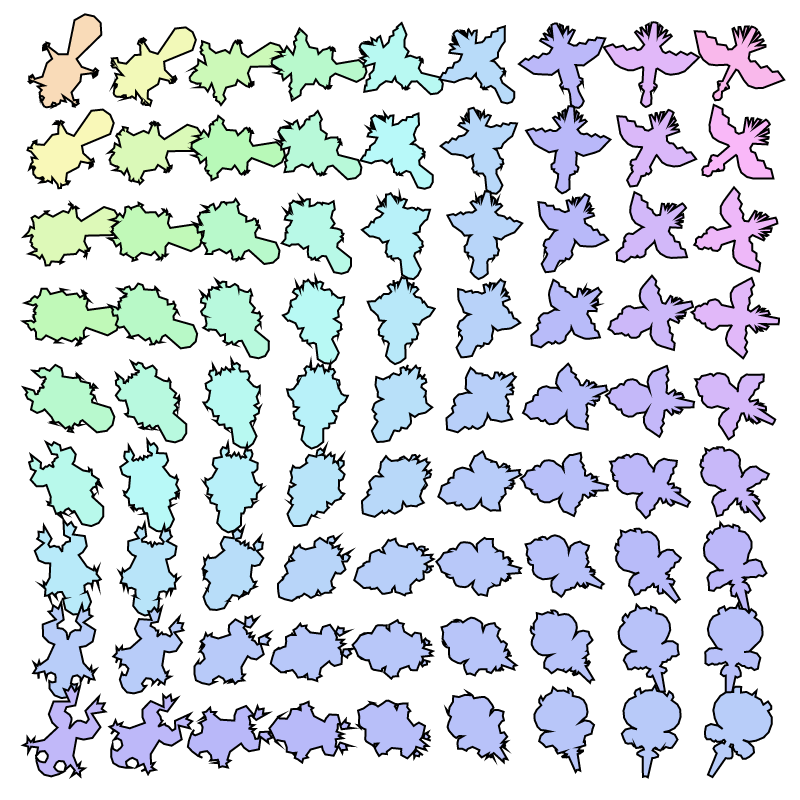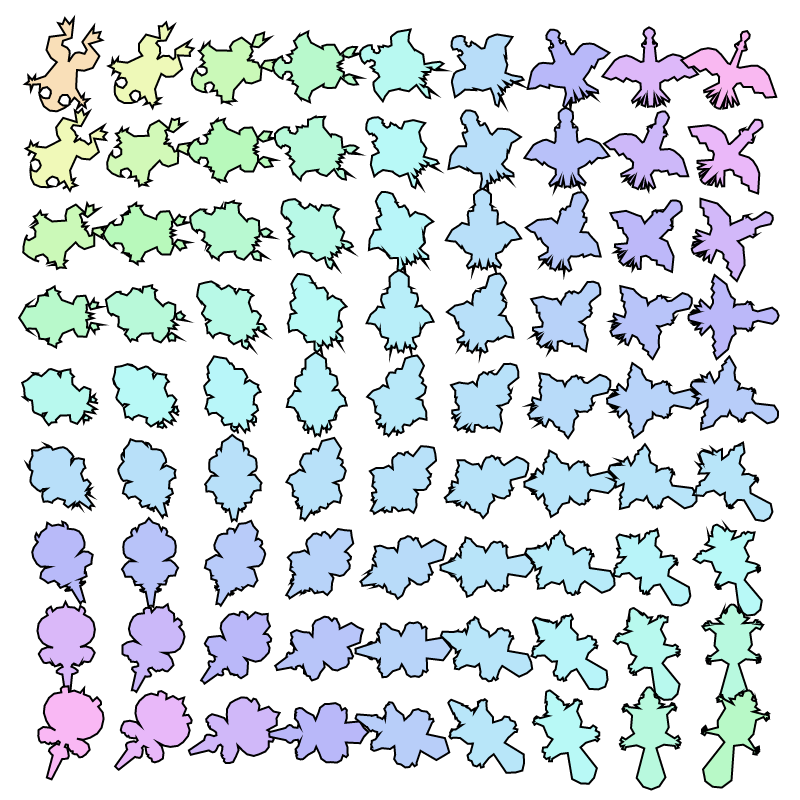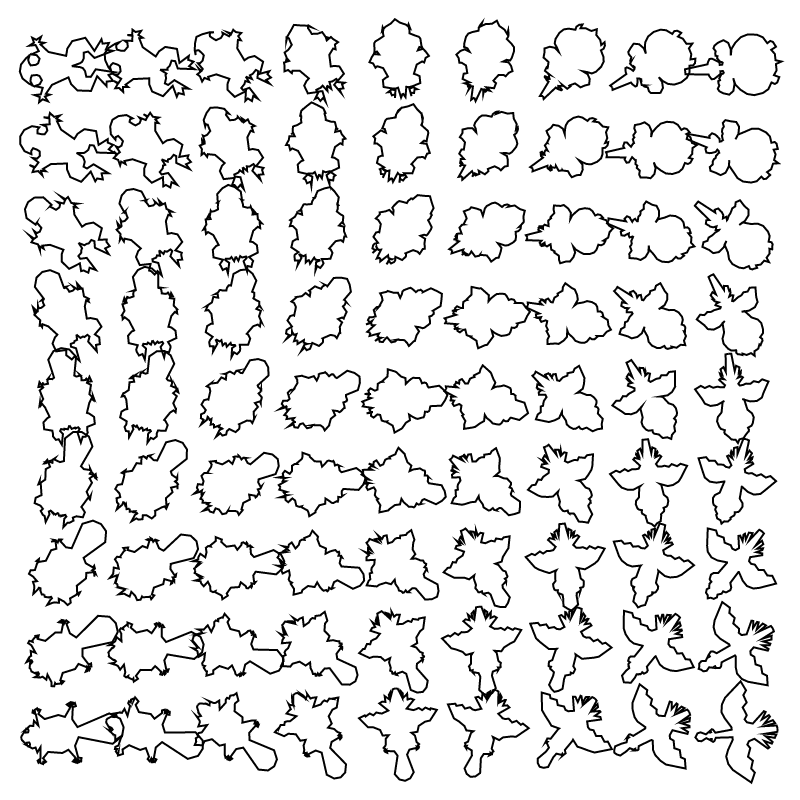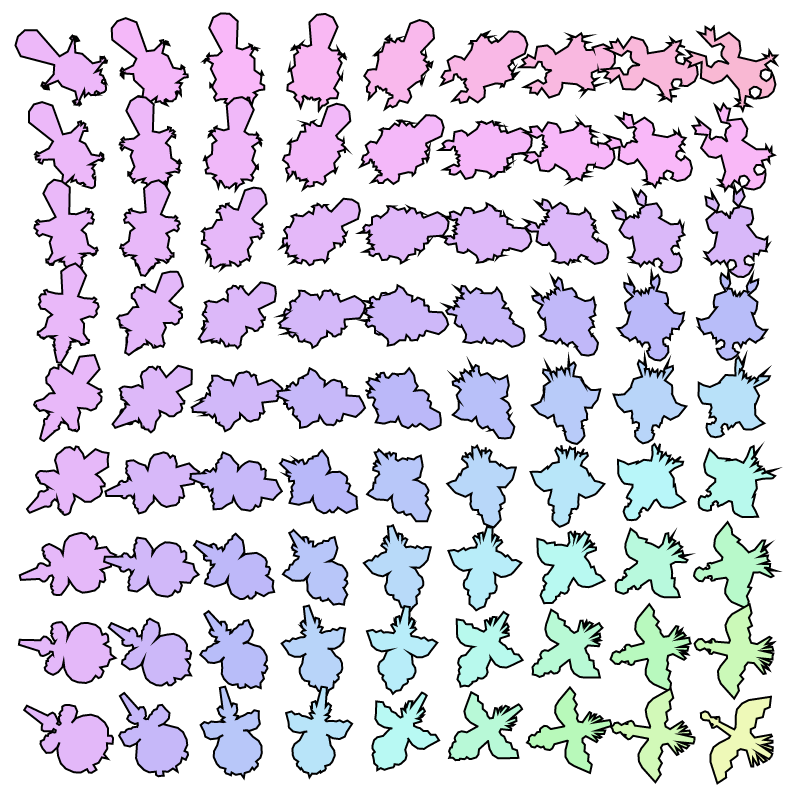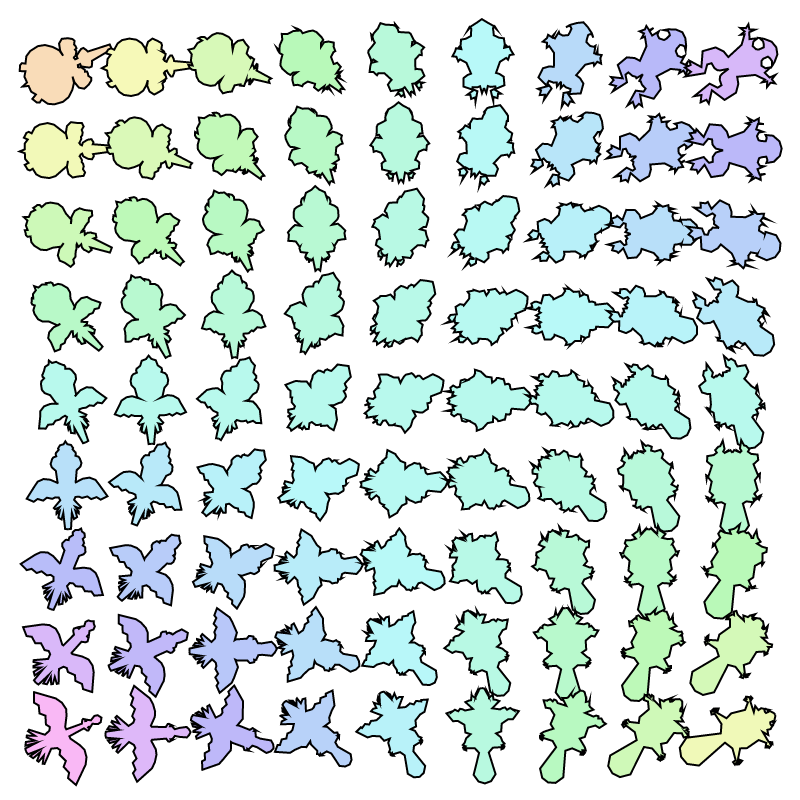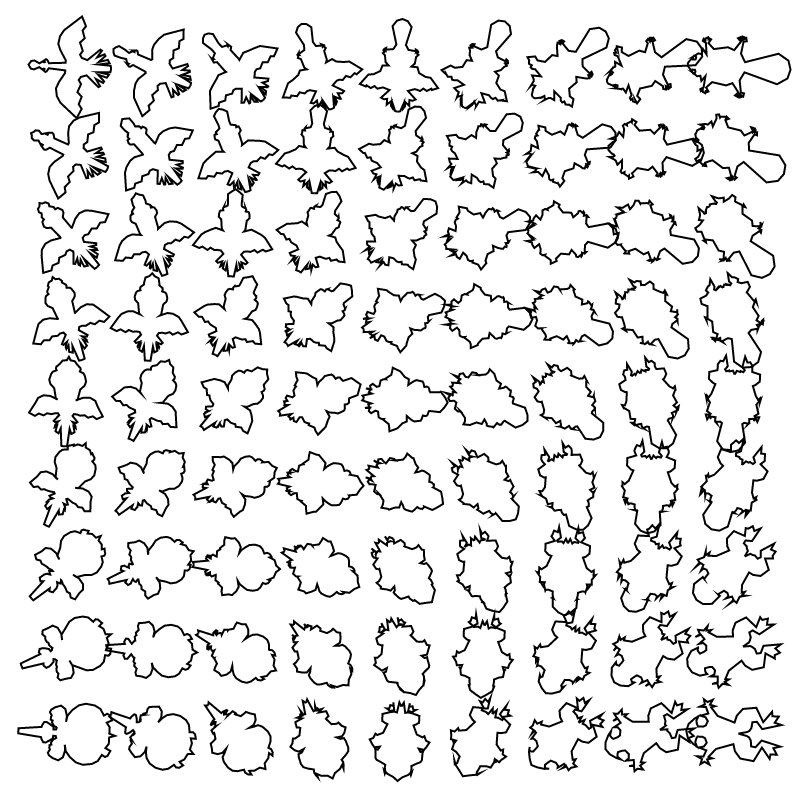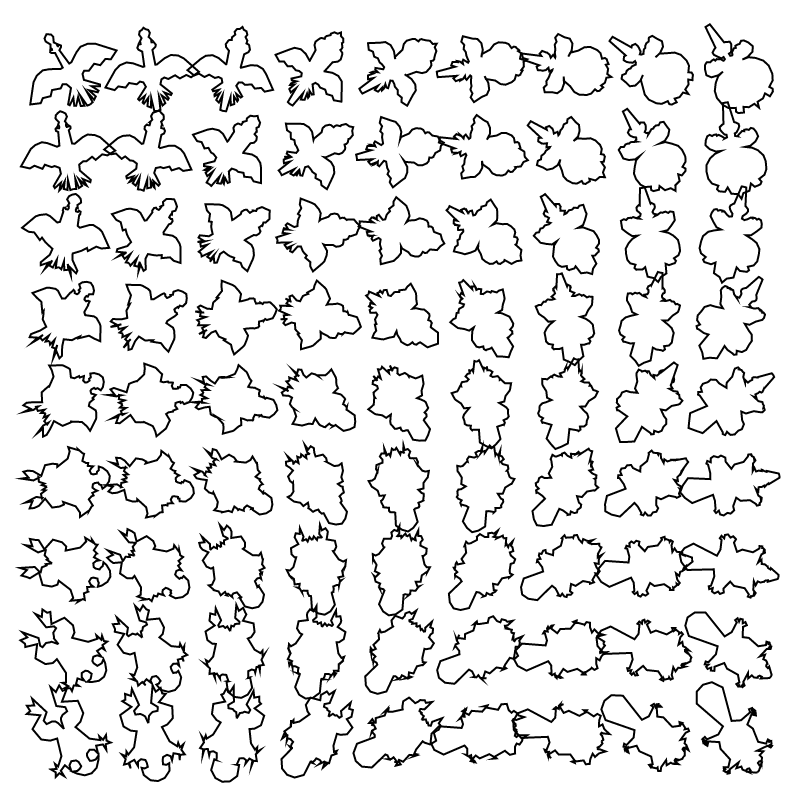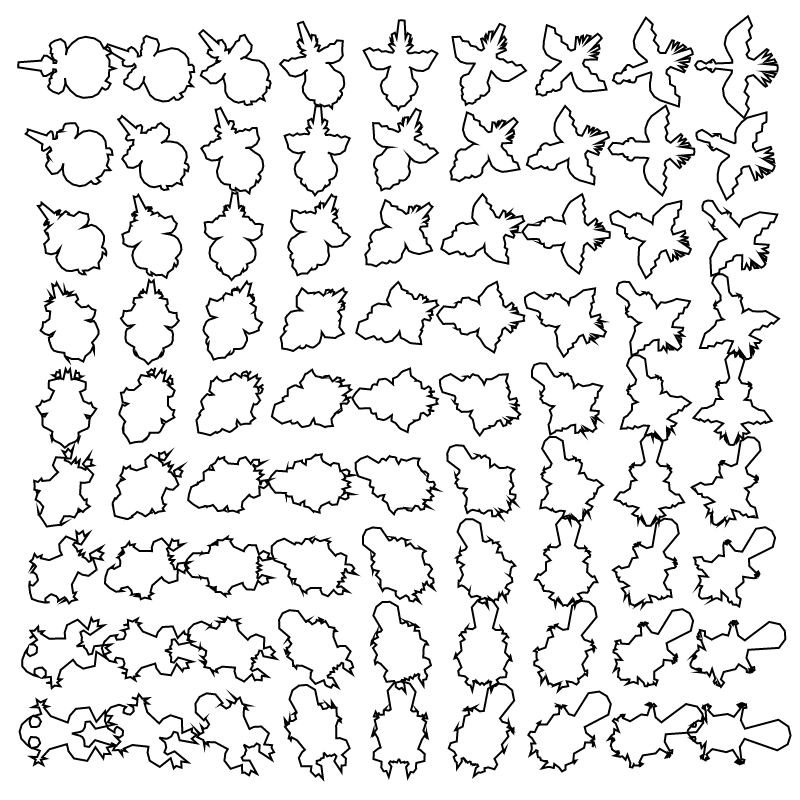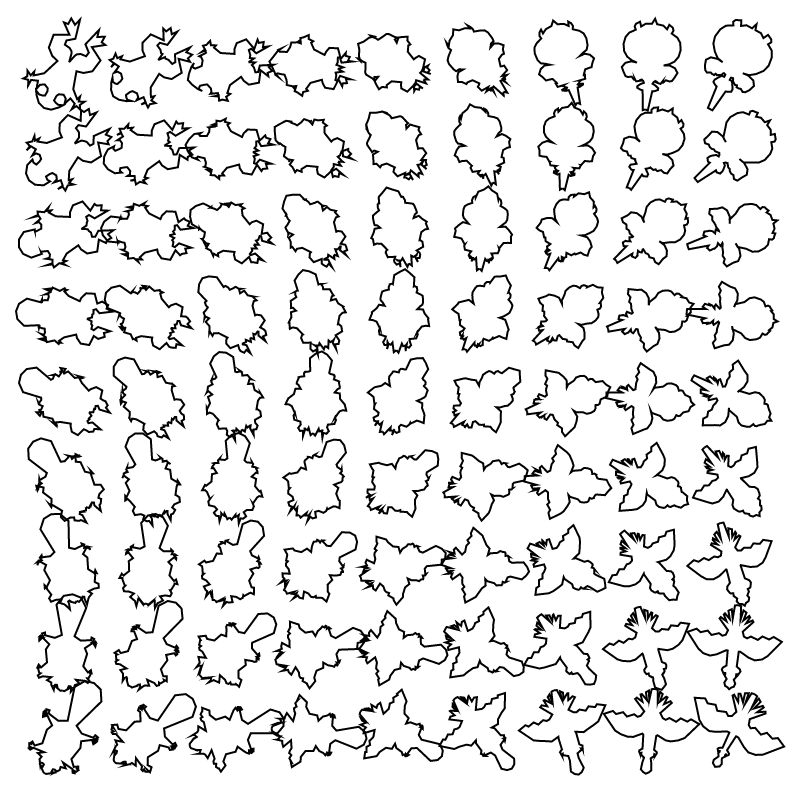Creature Interpolation
IPFS
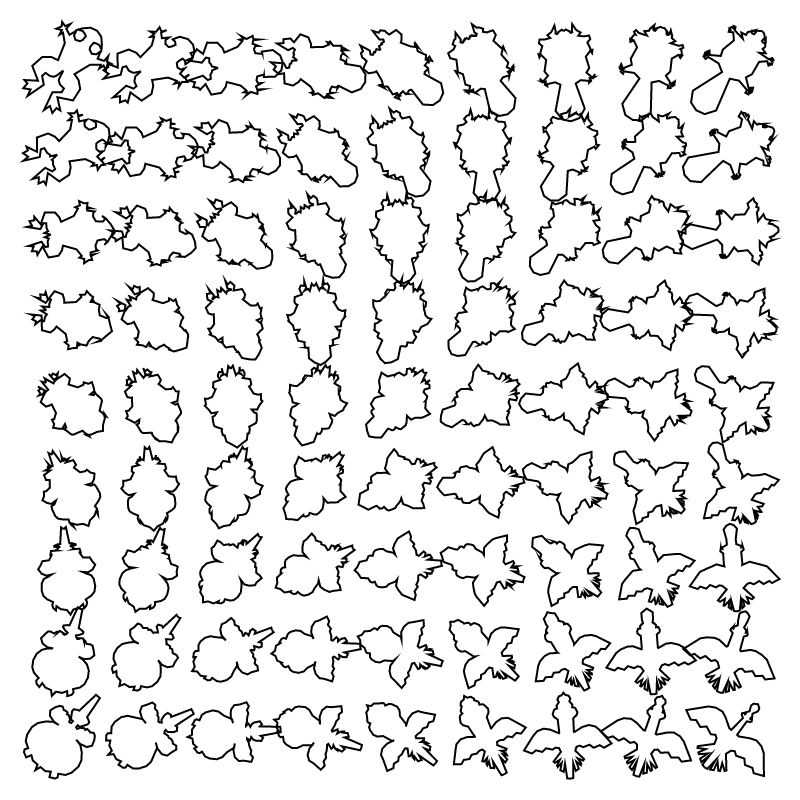
13 September 2023•TEZOS•IPFS
Creature Interpolation is a way to create new and interesting images from a database of creature outlines that I created in the 1970s. The original outlines were hand-drawn on graph paper, and each one was "half-drawn" on the vector x=y. I used FORTRAN code to read in the coordinates of the half-figure and reflect those points programmatically into complete, closed outlines. This ensures that the interpolated images are always smooth and closed.
To create a new image, I randomly place one of the four creature outlines in each corner of a grid. I then rotate each outline by a random number of degrees. Next, I use linear interpolation to create all the in-betweens for each row of the grid. This creates a smooth transition between the four outlines. I then use linear interpolation to form the vertical columns of the grid, interpolating between the rows. This process is more commonly known as bi-linear interpolation.
In 75% of the cases, I do not add color to the image. This keeps the image true to the original plotter drawings from the 1970s, which were black pen on a white background. However, in 25% of the cases, I fill the interpolated shapes with bi-linear interpolated color. I do this by randomly assigning four colors to the picture space. Then, I assign each creature outline a color based on its relative position in the space.
I hope you enjoy this blast from the past!
Please visit: www.drbillkolomyjec.com
To create a new image, I randomly place one of the four creature outlines in each corner of a grid. I then rotate each outline by a random number of degrees. Next, I use linear interpolation to create all the in-betweens for each row of the grid. This creates a smooth transition between the four outlines. I then use linear interpolation to form the vertical columns of the grid, interpolating between the rows. This process is more commonly known as bi-linear interpolation.
In 75% of the cases, I do not add color to the image. This keeps the image true to the original plotter drawings from the 1970s, which were black pen on a white background. However, in 25% of the cases, I fill the interpolated shapes with bi-linear interpolated color. I do this by randomly assigning four colors to the picture space. Then, I assign each creature outline a color based on its relative position in the space.
I hope you enjoy this blast from the past!
Please visit: www.drbillkolomyjec.com
I've been involved in making art with the computer since the early 1970's. I’m one of the few early pioneers who’s still practicing Generative Art today.
36 EDITIONS
•4 RESERVES
minted
10 / 36
fixed price
4 TEZ
Lorem ipsum project longer longer
0.00001 ETH
Lorem ipsum project longer longer
0.00001 ETH
Lorem ipsum project longer longer
0.00001 ETH
Lorem ipsum project longer longer
0.00001 ETH
Lorem ipsum project longer longer
0.00001 ETH
Lorem ipsum project longer longer
0.00001 ETH
Lorem ipsum project longer longer
0.00001 ETH
Lorem ipsum project longer longer
0.00001 ETH
Lorem ipsum project longer longer
0.00001 ETH
Lorem ipsum project longer longer
0.00001 ETH
Lorem ipsum project longer longer
0.00001 ETH
Lorem ipsum project longer longer
0.00001 ETH
Lorem ipsum project longer longer
0.00001 ETH
Lorem ipsum project longer longer
0.00001 ETH
Lorem ipsum project longer longer
0.00001 ETH
Lorem ipsum project longer longer
0.00001 ETH
Lorem ipsum project longer longer
0.00001 ETH
Lorem ipsum project longer longer
0.00001 ETH
Lorem ipsum project longer longer
0.00001 ETH
Lorem ipsum project longer longer
0.00001 ETH
Lorem ipsum project longer longer
0.00001 ETH
Lorem ipsum project longer longer
0.00001 ETH
Lorem ipsum project longer longer
0.00001 ETH
Lorem ipsum project longer longer
0.00001 ETH
